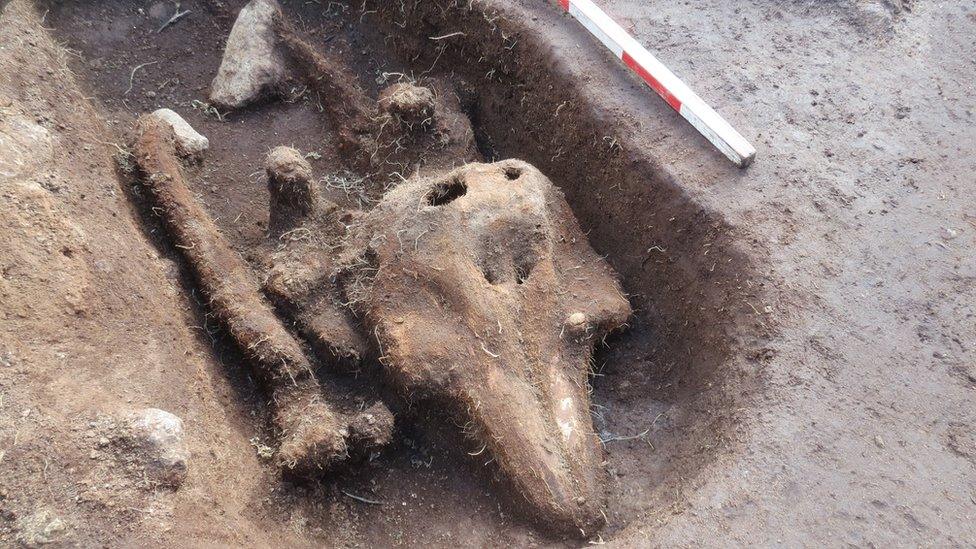Guernsey skeleton found near buried porpoise 'a sailor'
- Published
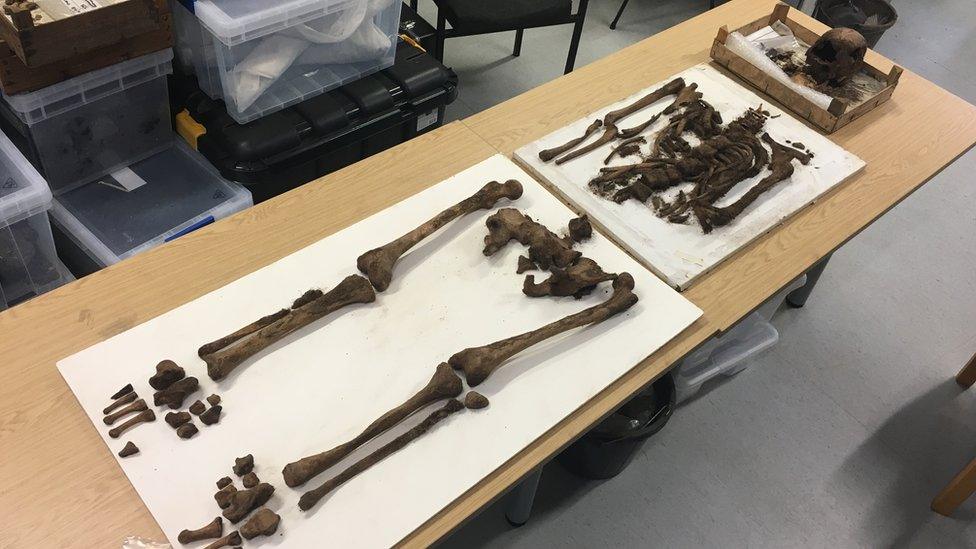
The poor condition of the skeleton is likely to be because of spending time in the sea and Guernsey's acidic soil
A skeleton found buried on a tiny island off Guernsey is thought to be that of an 18th Century Royal Navy sailor.
The remains were found on Chapelle Dom Hue, in 2018 when a toe bone was found sticking out of the ground.
It followed the discovery in the same area of a porpoise buried in the 15th Century for unknown reasons.
The skeleton has been examined by archaeologist Phil de Jersey, who said it was "not in the best of shape".
The States of Guernsey archaeologist said: "But after 250 years what do you expect?
"One of the problems we always have with bodies dug up in Guernsey is our soil is very acidic, so the bones get eaten up very quickly."
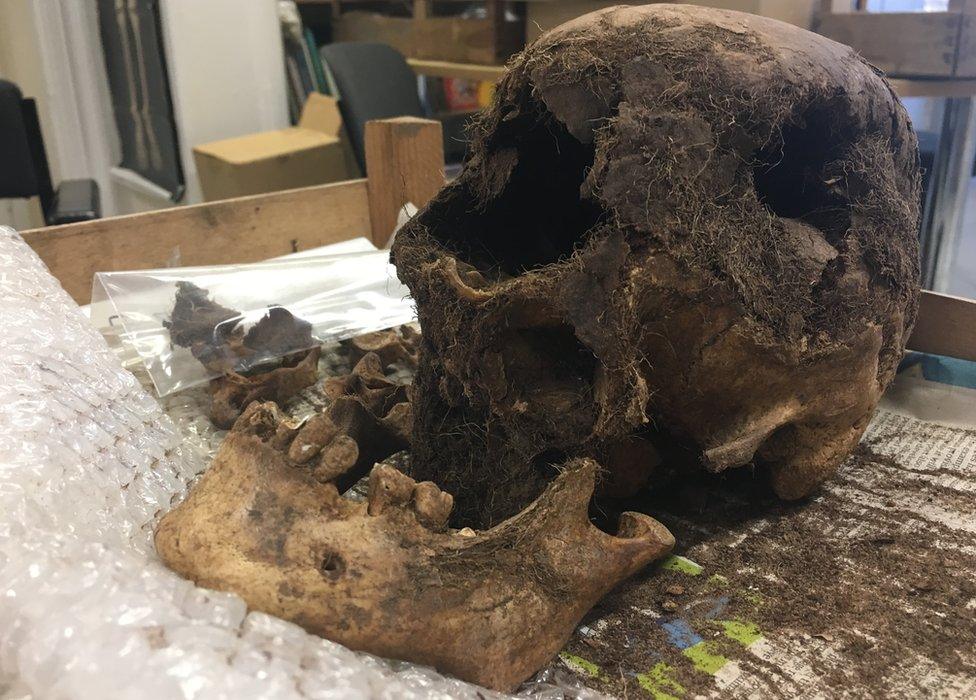
Phil de Jersey said analysis of the skeleton's teeth could reveal his diet and possible place of origin
Dr de Jersey said the approximate date of death of 1760 had been established through a combination of radiocarbon dating and examining buttons found with the remains.
Six leather buttons found matched those often worn by navy sailors in the latter half of the 18th Century.
Dr de Jersey said the fact the body's hands and fingers were missing indicated it had also spent some time floating in the sea.
"Those are the bits that would get nibbled, they'd get fish and crabs or whatever having a go," he said.
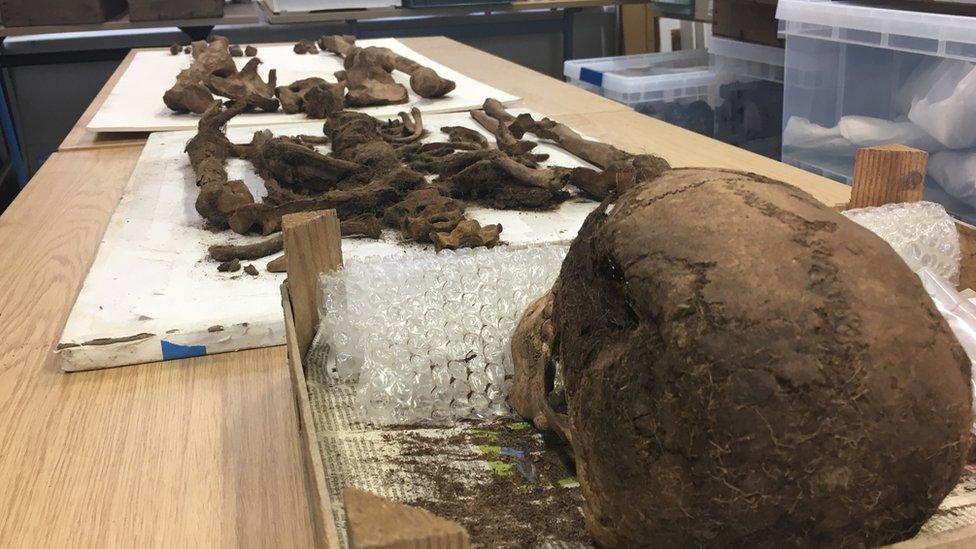
The age of the remains was determined through radiocarbon dating and examining buttons found on its chest
Before the remains are buried or put into storage, Dr de Jersey said he wanted to conduct analysis of the teeth to analyse the man's diet and help uncover more about where he came from.
"If the teeth turn out to be French or Spanish then all my theories about him being a Royal Navy sailor will just have to go out of the window," he said.
- Published17 November 2018
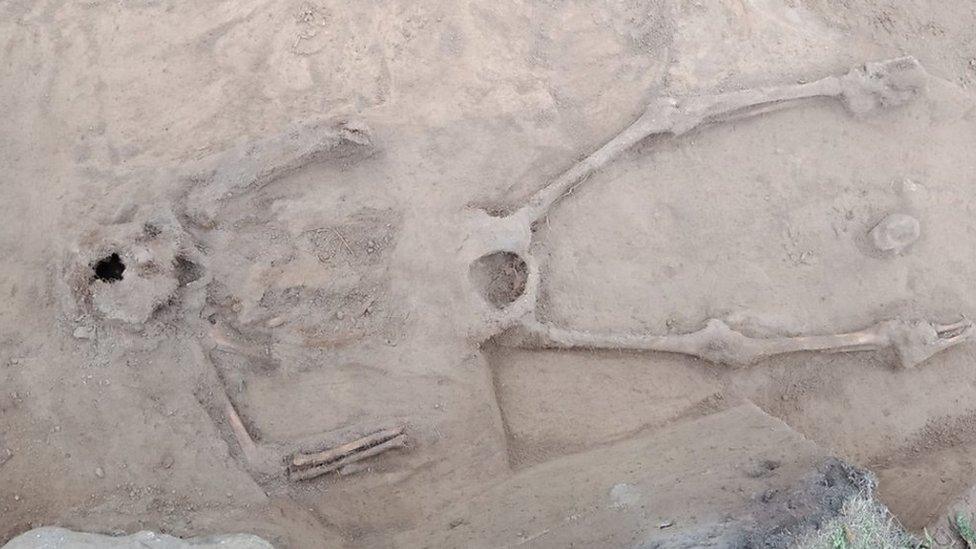
- Published1 November 2018
